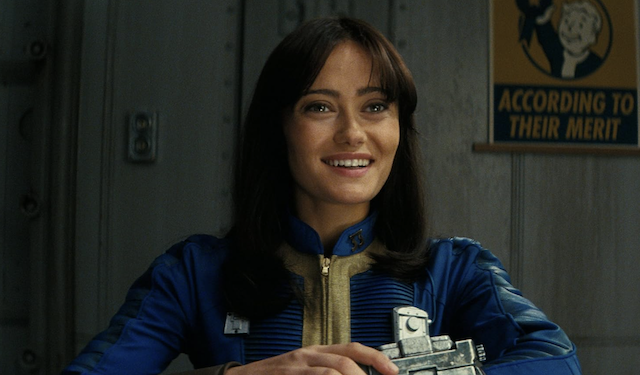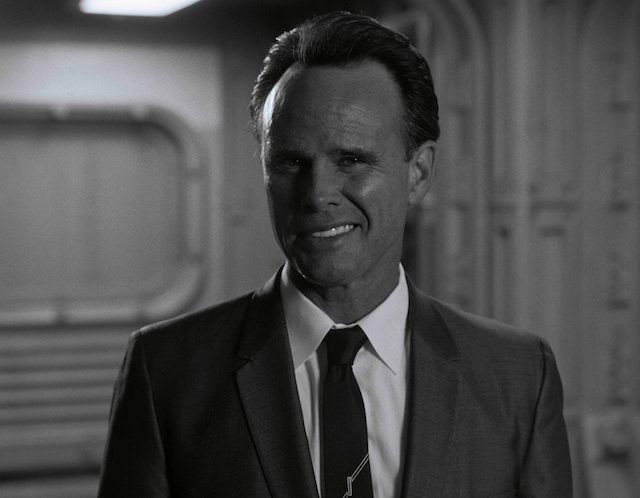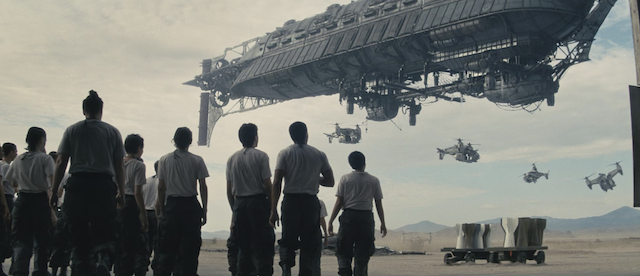
Amazon Prime’s Fallout TV series didn’t have to wait for the success of HBO’s adaptation of The Last of Us to get the green light. The adaptation of the Bethesda entries of the popular game series was already filming around the same time the Naughty Dog adaptation was wrapping. It isn’t necessary for one production to take any cues from another, but with The Last of Us being the pinnacle of video game adaptations, it’s hard not to compare one to the other in some ways. While Fallout is an overall success as well, it could have learned a few things from The Last of Us that would have really elevated its first season.
Lucy MacLean (Ella Purnell)–whose last name is seemingly pronounced as McLaine throughout the show, making this an unofficial Die Hard sequel-is what the rest of the world calls, a vault dweller. Vault Dwellers are those lucky enough to have purchased space in a fancy underground society before a nuclear war destroyed the world and turned the surface into a radioactive wasteland. There are hundreds of vaults across the world. Lucy is an inhabitant of vault 33.
She decides she needs to break the rules and head to the overworld after a group of raiders attack the peaceful dwellings of vault 33, kidnapping her father and taking him with them. Lucy will do whatever it takes in a version of the world she doesn’t know to get her father back and return to the happy go lucky living of the vault. She’ll have to deal with madmen, ghouls, robots, mutated animals, and the Brotherhood of Steel in her travels to save her poor papa.

If you’re unfamiliar with the video game series, there is a lot to catch up on in the world of Fallout. So many things take time to unfold through the season’s 8 episodes, and it counts for about 25% of what is housed in the games. The show doesn’t need to mirror everything in the show to be a success. Any piece of art should stand on its own, but the parts of Fallout that fail come from attempts to pump as much fan service in as possible.
When this is done in The Last of Us, the little nods and easter eggs fit into the story being told on the screen, in the moment. There is actually less exposition in Fallout than the former, but some sort of middle ground should have been met. I don’t need, nor want, a scene where someone has to explain to one of the characters what each and every item does when they use it. Not having someone say, “That’s Jet. Take a hit off the inhaler and you get a boost of energy and power to help take out your enemy.” Yet, when a raider takes his hit of Jet in the first big fight sequence to no fanfare, it felt strange and out of place almost.
Throwing in things that fans can react to but mean nothing to wider audiences for a single scene is a wasted effort. This isn’t a problem that exists from wall to wall in each episode, but it takes some air out of the viewing experience. This also happens most in the first few episodes, making the show start on a slower foot than it should have.

What is most impressive though is that the writers were able to form their own story (not using one of the previous Fallout plots that are different for each game), but still kept to the spiritual cannon each story does revolve around. Particularly, by the time the end of the season pulls up, those same morality plays that haunt each new vault dweller as they boot up and finish a game are right where they belong.
As already described, it can be a bit tougher to get into than other shows. The character of Maximus (Aaron Moten) who headlines the Brotherhood of Steel storyline is hard to like for a bit. Even though he is picked on and looked down upon by his brethren, his actions are distasteful and hard to accept. He technically doesn’t do much wrong, but he acts inappropriately and it is hard to bond with him for four or five episodes.
The show also doesn’t take enough time to fully explain the world before the bombs hit. Even though there is a main storyline that shows much of Cooper Howard’s (Walton Goggins) life before the fallout and before becoming a ghoul, a basic understanding of the Fallout mythos feels like it is missing. Even by the end of the season, uninitiated audiences are likely to think that the bombs fell in the 50s. They probably won’t realize that the pre-wasteland world was in the late 2070s, but the aesthetics of popular life still mirrored the 1950s; but with advanced tech.
There is also a lot of the world that feels small and awkward. From the point Lucy has about 20 miles to travel to get her father back, she and every character tend to walk in circles. Yet, they all act as if they have just traveled over multiple state lines. Even with the promise of seeing some missing big features the next season, there is a lot missing for the fanboys out there. No death claws, no super mutants, no good ghouls…a lot is being promised for the next part of the journey. There is even a special tease for the most hardcore game fans at the very end.
I might have just done a lot of complaining, but it isn’t totally representative of the final product. What it is signifying though; some tighter strings and a focus on creating less of a perfect copy of the game atmosphere might have helped elevate Fallout to a higher plane.

Final Grade: B
Check out more of Matthew’s articles.
Share your thoughts on new series “Fallout” below.
Here’s the trailer of the film.

